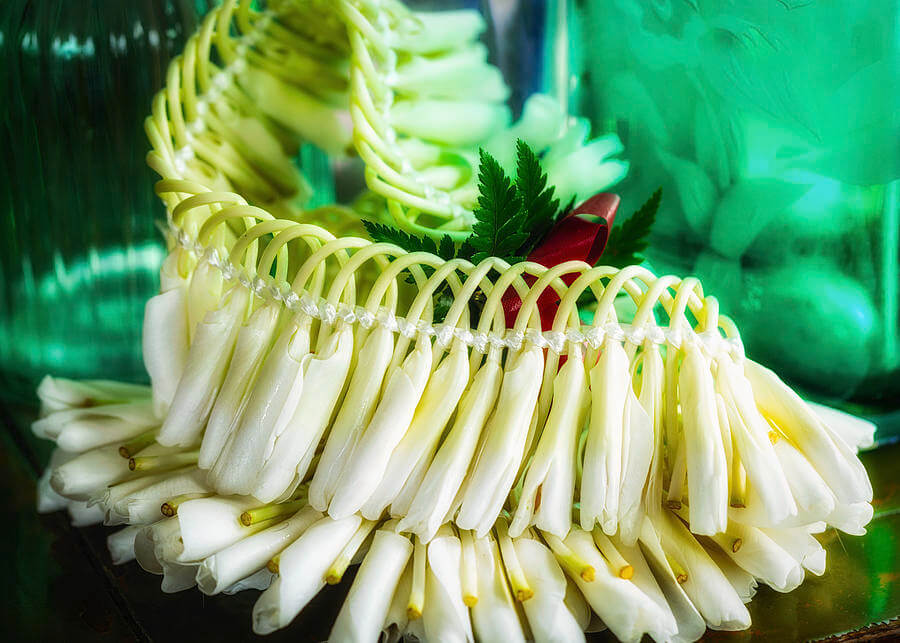Amazing Things You Need To Know about Traditional Hawaiian Lei
Posted by Maris on 23rd Aug 2023
Aloha! Welcome to Hawaii, the land of breathtaking beaches, breathtaking sunsets, delicious tropical cuisine, and the world-famous flower lei. There is a lot to learn about Hawaiian leis that are fascinating such as how to make leis, Hawaiian leis for graduation, and Hawaiian wedding lei,…
Giving a lovely lei to someone you love embodies the spirit and warmth of Aloha and fresh Hawaiian leis. Because of this, the lei greeting effectively establishes a sense of place when traveling to or leaving Hawaii. With Hawaiian lei flowers, the lei represents a potent symbol of the islands, love for family, remembrance, and the aloha spirit.
The History of the Hawaiian Lei
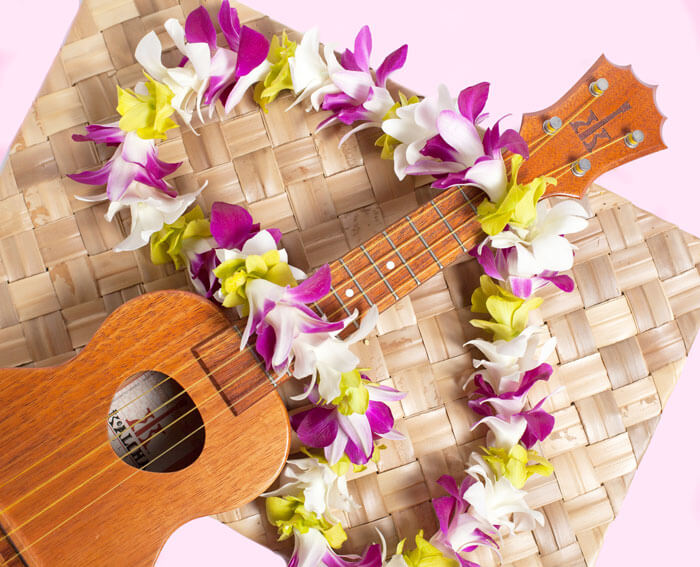
Early Polynesian explorers who made the incredible journey from Tahiti in sailing canoes and navigated by the stars brought the lei tradition to the Hawaiian Islands. With the arrival of these pioneers, Hawaii’s lei custom was established.
Traditional Hawaiian lei
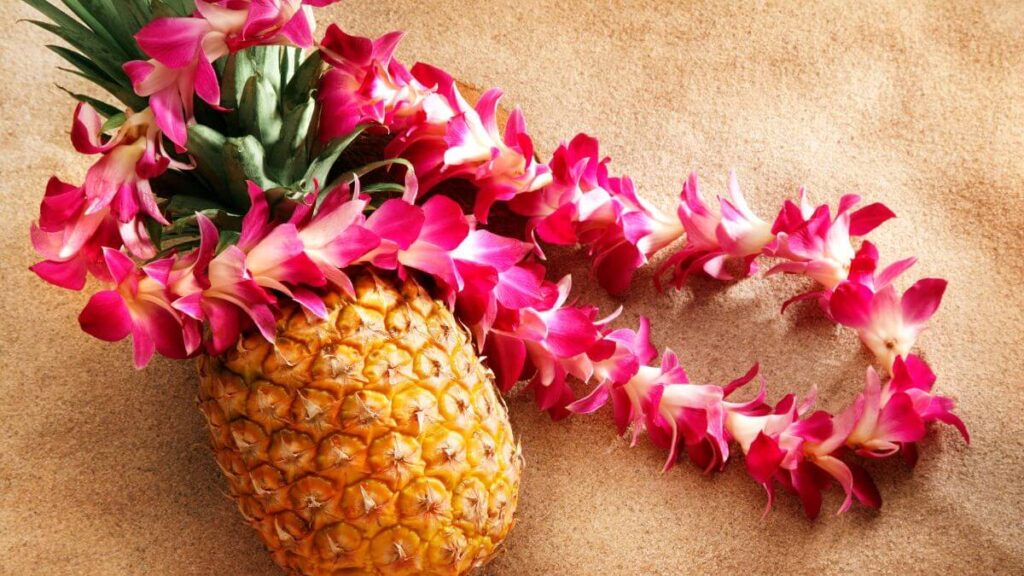
Giving, receiving, wearing, storing, and disposing of lei are all subject to a number of traditions and conventions.
Since it is considered disrespectful to place one’s hands above another’s head or touch their face or head, traditionalists bow slightly and raise their hands above their hearts when giving a lei, allowing the recipient to accept it. Only open lei are traditionally given to women who are expecting or nursing. A lei is displayed in a place of honor, such as the musician’s music stand or microphone stand, if they are unable to wear it due to allergies or other reasons (for example, a musician who would tangle the lei in their guitar strap).
Lei must never be carelessly discarded or put in the garbage. It is customary to return them to the location where they were collected, or if that is not possible, to the earth by hanging them from a tree, burying them, or burning them. A lei is a symbol of love, and tossing one away entails doing the same for the giver’s love. Many different lei can be dried in windows, allowing the room to fill with their sweet scent. Even in automobiles, this method is frequently applied.
When to Give a Lei
A lei can perfectly complement every occasion. No matter who the recipient is or what kind of lei you are looking for, you can discover which is the perfect choice to honor the recipient.
Polynesian Print offers a special Lei Collection. Discover and shop now with 15% off code: POLYBLOG15 (use code at check out)
Wedding Leis
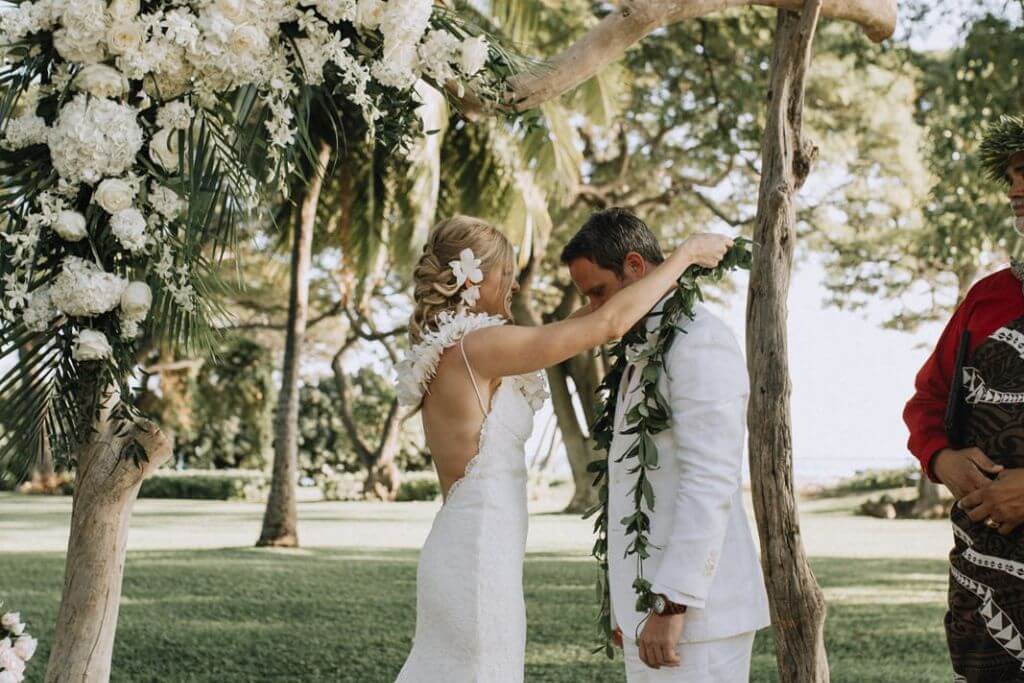
Weddings are among the most popular occasions to give a lei as a present. Without a lei, no Hawaiian wedding would be complete. Wedding leis are unique leis that represent the love the couple has for one another, the love of everyone in attendance, and the spirit of aloha that permeates the ceremony.
Frequently, maile leaves are used to make the groom’s wedding lei. There are also ti-leaf wedding leis made in the maile lei style for grooms, though the groom wears the maile lei more frequently. These leaves can occasionally be found entwined with delicate, fragrant flowers like tuberose. The bride frequently wears a lei of Hawaiian wedding flowers, like tuberose, white ginger, or orchids. Sometimes, strands of two or three different flower varieties are woven together to form a Hawaiian wedding lei to give it a lush floral appearance.
Hawaiian leis for graduation

A Hawaiian graduation ceremony traditionally includes the giving for graduation leis. Although it has a lengthy history, it is now widespread worldwide. Offering the graduate a graduation lei is a lovely way to express your respect, love, and support for them. It can also demonstrate how important they are to you.
The leis can also be given to someone if you are aware of their particular love for Hawaiian culture or if they have a dream of going to Hawaii one day. It is customary for the graduate to bow their head and wear the lovely flowers around their neck after accepting this gift. Some people end this ceremony by kissing each other on the cheek. Hawaiian leis for graduation is one of the most popular occasion.
People also give lei at luaus, for anniversaries, birthdays, funerals, blessings, and ceremonies.
Hawaii Lei Day
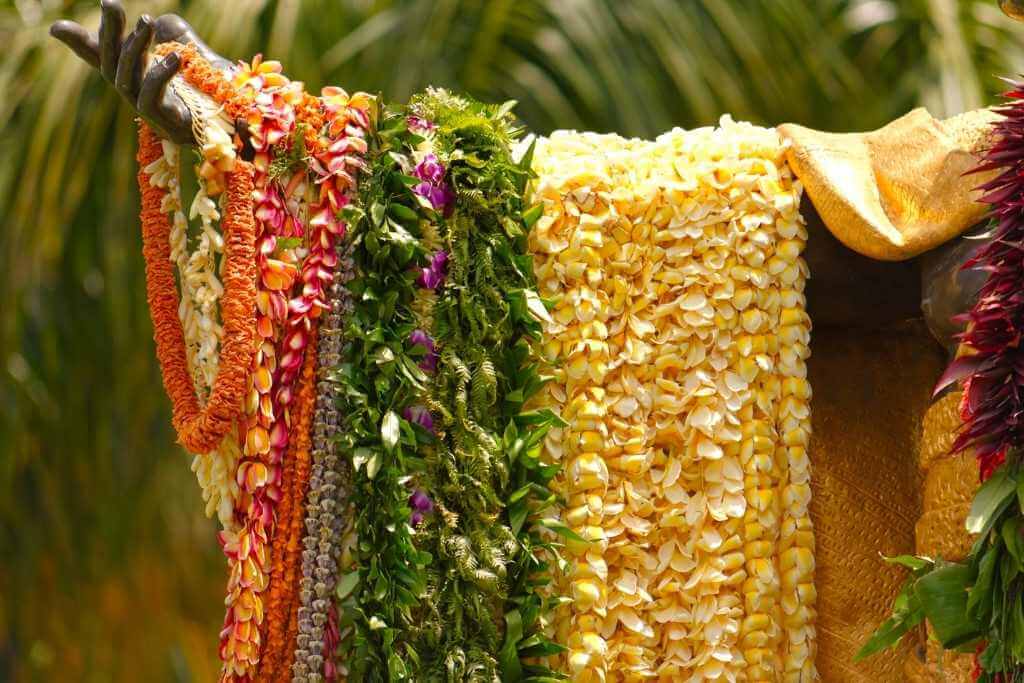
Every major island celebrates Lei Day, and in pageantry, each island is represented by a particular kind of lei and a color.
- Red, hia lehua; Hawaii (Metrosideros polymorpha)
- Pink, lokelani; Maui (Rosa damascena)
- Gray or silver, hinahina, Kahoolawe (Heliotropium anomalum var. argentum)
- Orange, kaunaoa in Lni (Cuscuta sandwichiana)
- Oahu: ilima, gold or yellow (Sida fallax)
- Molokai: kukui and green (Aleurites moluccanus)
- Purple, mokihana; Kauai (Melicope anisata)
- White Niihau: ppo Niihau (Niihau shells)
How to Make a Lei
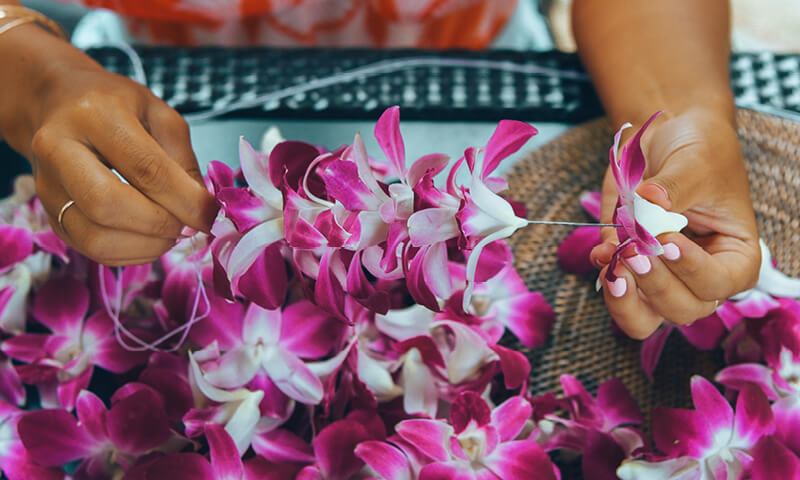
You can create your own leis using supplies from your own backyard! A lei can be made from literally any flowers, leaves, ferns, etc. But if it’s your first time, stick to the straightforward single-strand flower lei.
Gather any medium-sized flowers you can find, such as roses, daisies, carnations, etc., to start making lei. To make a 40′′ single strand lei, you’ll need about 50 flowers. Fold a cotton string that is about 100′′ long in half. At the end of the twine, make a big knot; this will serve as a “stopper” for your flowers as you string them. Keep in mind to leave extra string below the knot; you’ll need it to finish tying the lei.
Any long needle will work; in Hawaii, steel lei needles are typically 12 to 18 inches long and used to string flowers. Straight through the center of the flower’s face, to the back. Never force the flowers; you can always move them farther down at a later time. Gently guide the flowers to the base of the string close to the knot. When the lei measures 40 inches or so, you are done. You can add a ribbon to your lei or leave it unadorned.
7 of Hawaii’s most popular Hawaiian lei
Pikake Lei – You usually smell these pretty, little, delicate flowers because of their strong scent before you see them.
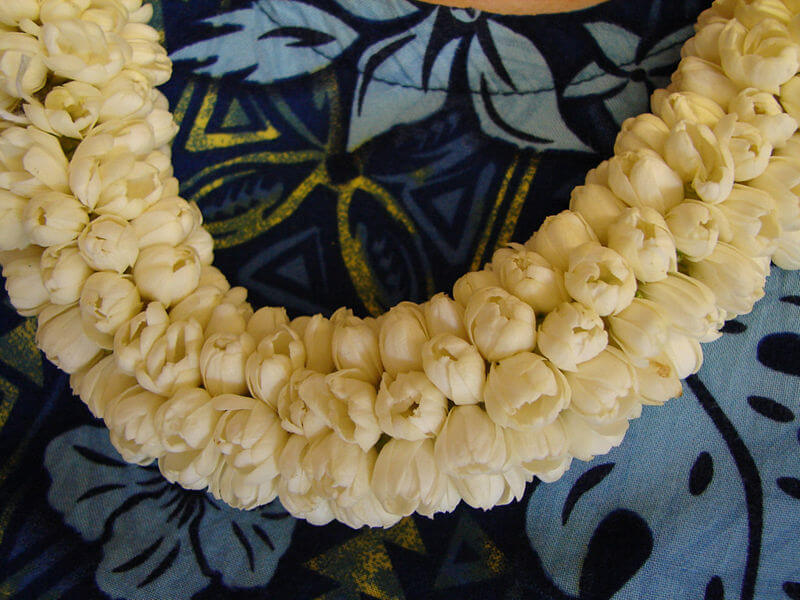
Hee Berry and Sea Grape – This twisted lei of berries and green sea grapes is decorated in the festive hues of red and green. The hee berry is also known as the Christmas Berry due to its bright red color. Hee is named after the Hawaiian word for octopus due to the tree’s long branches.
Purple Orchid Lei – are among the most common lei used for airport and luau greetings, despite not being a traditional Hawaiian flower lei. They are truly the ideal lei for every person and situation because they are more durable than most other flowers, last for a long time, can be dyed, and have no scent.
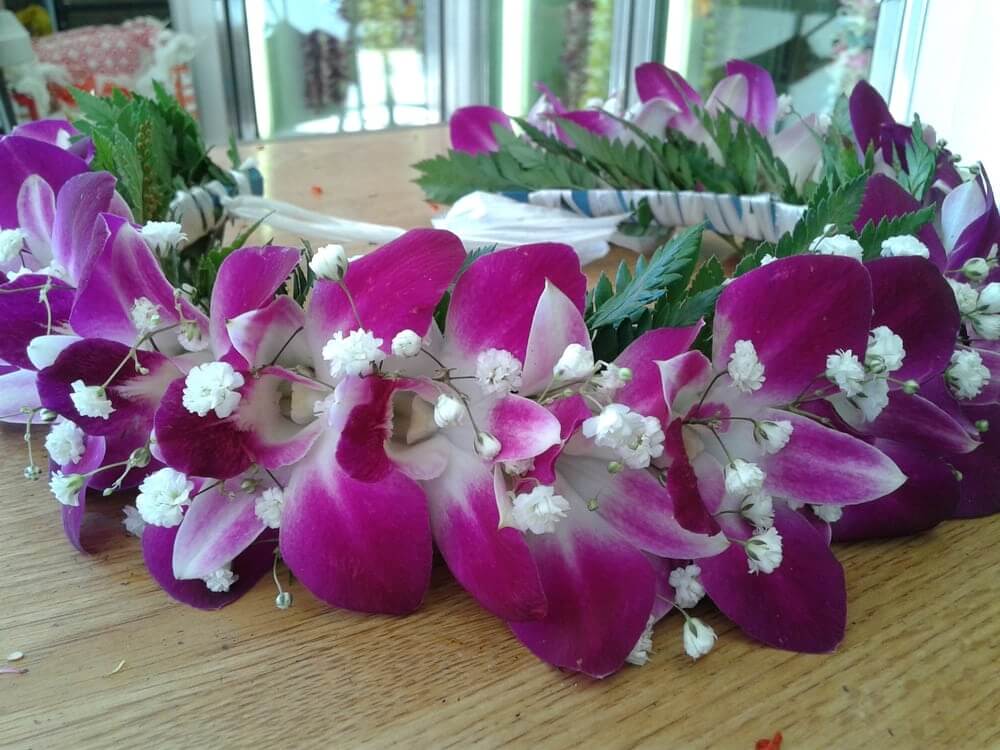
Pua Kenikeni Lei – The trumpet-shaped flower of the pua kenikeni tree is one of the most fragrant of flowers. It was originally from the Pacific and was brought to Hawaii in modern times. It was previously known only as pua (flower) there. Because each flower was once sold for 10 cents when it was first used to make lei, it earned the name pua kenikeni (“10-cent flower”) in Hawaii.
Maile Lei: This leafy lei is made from the vines of the fragrant maile plant, the only native Hawaiian flower on this list. It is typically given and worn open-ended on very significant occasions, like weddings or graduations.

Tuberose and Ti Leaf Lei – This open-ended lei made of tuberose and ti leaves has two strands that are intertwined to make it suitable for both men and women to wear. A canoe plant that the early Polynesians brought to Hawaii was the broad-leaved ti plant. One of Hawaii’s most useful plants, it provides food, shelter, medicine, and clothing. Its leaves are also used to make the ti leaf lei.
White Ginger Lei: The awapuhi keokeo (white ginger) lei is an exquisite ornament that lies flat with its petals facing outwards and emits a delectably sweet scent. It is thought to have originated in India and was brought to the Hawaiian Islands by early Polynesians on canoes.
